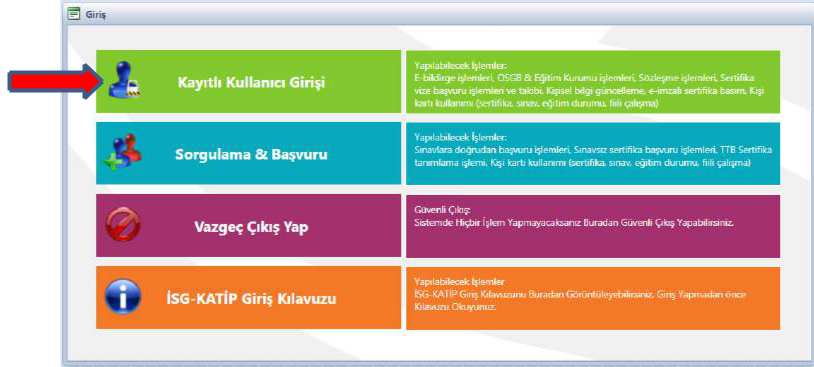SIGNS OF IMPENDING DEATH – COLLATED FROM WWWPALLIATIVEDRUGSCOM THERE
(START OTHER SIDE) ASK QUESTIONS SIGNS + SYMPTOMS?10 SCOPE THE XXX PLANT DESIGNS AND MANUFACTURES PRODUCTS
6 NEGATIVE LISTENING HABITS THE FAKER ALL OUTWARD SIGNS
633 CORRELATION – CAUSALCOMPARATIVE – QUASIEXPERIMENTAL – EXPERIMENTAL DESIGNS
A DIAGRAMMATIC APPROACH TO PEIRCE’S CLASSIFICATIONS OF SIGNS1 PRISCILA
A SHORT LIST OF SALIENT WARNING SIGNS FOR EATING
SIGNS OF IMPENDING DEATH – collated from www
SIGNS OF IMPENDING DEATH – collated from www.palliativedrugs.com
There was a paper in Palliative Medicine about 10-12 years ago that addressed the question of who was best at predicting time of death. The hands-on carers came out ahead.
My feeling is that the best signs are subtle changes in the patient's behaviour that are identified by those who spend time with the patient and have a good practical, extensive experience of caring for dying people. These changes include decreased activity, greater need for help, slight confusion, disinterest, expressed weariness, listlessness, slowing movements and dull eyes. On the other hand a sudden increase in activity to summon the family to say goodbye can presage death as the patient realises the limits of their remaining strength and uses it all up saying goodbye. Other patients may time death to occur after a relative arrives from far away - our knowledge of this event allows us to make a guess that the patient might die then.
On a lighter note I think death may be imminent if the slow dripping music of whales or dolphins in the rainforest is playing in the patient's room. Some cultures may not experience this.
Prediction of death is an art based on having spent a lot of time with patients. We can never remove the uncertainty. Experienced clinicians just say they have a feeling that someone will die soon - that intuition is the product of their sensitive observation and experience. I remember an eminent palliative care clinician who was visiting Australia saying that, as a student, he had spent many hours sitting with dying people to watch and learn about the process. Individual signs contribute to the snapshot picture but do not tell the story of change which has the dimension of time. It can only be told over time. We are all surprised by the variety of dying.
Signs to me of impending death include peripheral shut down i.e. mottled appearance to limbs, very often sweat beads above the top lip, the patient feels cold to the touch and a 'pinched' nose. No references unfortunately, just experience!!
Following on from the recent discussion of cold noses, I would be interested to find out any other signs of impending death. The obvious ones are those listed in the Liverpool Care Pathway: profound weakness, inability to take tablets, semi-comatose and able only to take sips of water.
This topic reminds me of one of the Palliative Care annual conferences some years back where a series of research projects looking at the diagnosis of impending death were presented. The studies and their methodologies were discussed at length. Then a Scottish chap stood up and really was quite baffled as to why so much research time should have been spent on a topic which they have already sussed in Scotland. He called it the 'Nick Factor' i.e. whether or not the patient looked in good 'nick'. This, by the way, could be determined with equal efficacy by the ward care assistants as by any doctor or nurse! I must say I'm with the Scots on this one.
Dr Anthony Ireland studied 29 patients for 4 weeks looking for a collection of clinical parameters that would assist with an accurate estimation of survival time. Immobility, confusion changed facial expression, homeostatic failure, breathing changes, decreased oral intake and detachment-ICHABOD syndrome is described. Patients with most all these phenomena are usually within one week of death.
APAA DESIGNS COMMITTEE – 2007 REPORT FOR HONG KONG
APPLICATION FOR CONSENT TO ERECT EVENT SIGNS IN THE
BEYOND SIGNS IN THE CITY PARTNER`S TRAINING KIT INTRODUCTION
Tags: collated from, wwwpalliativedrugscom, death, signs, impending, there, collated
- WTO ROUND TABLE ON GEOGRAPHICAL INDICATION THE GEOGRAPHICAL INDICATION
- ANNEX TO THE RESOLUTION NO 88 OF THE COUNCIL
- INTRODUCTION TO THE SEVERELY HAZARDOUS PESTICIDE FORMULATION REPORT FORM
- MACBETH READING LIST ADELMAN JANET “’BORN OF
- BOLETÍN DE PRENSA CIUDADANOS POR MUNICIPIOS TRANSPARENTES (CIMTRA)
- WEB WWWSBORKOSCZ EMAIL SBORKOSSEZNAMCZ HARMONOGRAM AKCÍ SBORU KOS ZIMAJARO
- POWERPLUSWATERMARKOBJECT3 REVISED GUIDANCE ON DISPOSAL OF HISTORIC ASSETS 11
- LEY 141986 DE 25 DE ABRIL GENERAL DE SANIDAD
- TOPIC T1 AQUA 2015 42ND IAH CONGRESS
- 0 APPLICATION FOR A LEIBNIZ DAAD RESEARCH FELLOWSHIP
- THE PRINTMAKERS ART DIGITAL OR ORIGINAL PRINTS REPRODUCTIONS OR
- ELEKTRİK PİYASASI LİSANS YÖNETMELİĞİ (26012005) 13 ELEKTRİK PİYASASI LİSANS
- 5 HIRING NONCANADIAN ACADEMIC STAFF WHEN FILLING ACADEMIC VACANCIES
- PROPRIETARY COMMODITY RECORD FORMATS FOR AES COMMODITY SHIPMENT WARNING
- PRIHLÁŠKA ZA ČLENA ZPŠAV NKOS MENO PRIEZVISKO A
- INTRODUCTION TO WORKING WITH TRANSFERENCE & COUNTERTRANSFERENCE IN PROCESS
- CITY OF YAKIMA HISTORIC PRESERVATION COMMISSION BYLAWS SECTION I
- INTRODUCTION MOODY COUNTY HIGHWAY DEPARTMENT SNOWICE REMOVAL PROCEDURES
- CÀLCULUS ÉS MOLT GRAN UN MILIÓ? (AMPLIACIÓ) RESPON
- ANEXO II – DESCRIPCIÓN DE CULTIVAR DE POROTO PARA
- İŞYERİ AÇMA VE ÇALIŞMA RUHSATI İÇİN İSTENEN BELGELER (UMUMA
- SZABLON UMOWA SPRZEDAŻY ENERGII ELEKTRYCZNEJ I ŚWIADCZENIA USŁUG
- RES Nº11988 INAM BUENOS AIRES 24 DE MARZO DE
- CONTRATO DE PROMESA DE COMPRAVENTA DE LA PRIMERA PARTE
- EMBAJADA DEL REINO DE BÉLGICA EN BOGOTÁ CALLE 26
- DIREKTOR UVJETI VSS ILI VŠS PRAVNOG EKONOMSKOG ILI TEHNIČKOG
- tm 11520237 Apéndice a Referencias ar 7050 Designación y
- 31 PAGE 3GPP TSG GERAN ADHOC 2 TDOC GERAN
- Apéndice 1 Normas Generales et nro 8317 nº Reglon
- C OLEGIO OFICIAL DE PERITOS E INGENIEROS TÉCNICOS INDUSTRIALES
CONCEPTOS DE LA INFORMÁTICA 1 LA PALABRA INFORMÁTICA SUELE
 UNITED WAY OF PIERCE COUNTY UNITED WAY OF
UNITED WAY OF PIERCE COUNTY UNITED WAY OF CAPITAL SOCIAL ET PRÉSERVATION DU PATRIMOINE CULTUREL ET ENVIRONNEMENTAL
CAPITAL SOCIAL ET PRÉSERVATION DU PATRIMOINE CULTUREL ET ENVIRONNEMENTAL SUPPORTING INFORMATION ELECTRON BIFURCATION MECHANISM AND HOMOACETOGENESIS EXPLAIN PRODUCTS
SUPPORTING INFORMATION ELECTRON BIFURCATION MECHANISM AND HOMOACETOGENESIS EXPLAIN PRODUCTS ACTA DE LA XIV ASAMBLEA GENERAL ORDINARIA MADRID ESPAÑA
ACTA DE LA XIV ASAMBLEA GENERAL ORDINARIA MADRID ESPAÑA ZAŁĄCZNIK NR 1 DO SIWZ SPRAWA NUMER 46DBPN2020 OPIS
ZAŁĄCZNIK NR 1 DO SIWZ SPRAWA NUMER 46DBPN2020 OPISRESTAURANTES AROMA MINEIRO ENDEREÇO PRAÇA DE ALIMENTAÇÃO DO SHOPPING
5 MY AUSTRIA WHAT DOES MY AUSTRIA CONSIST OF
 OMPIPISEMBOG022 PÁGINA 0 S OMPIPISEMBOG022 ORIGINAL ESPAÑOL FECHA 3
OMPIPISEMBOG022 PÁGINA 0 S OMPIPISEMBOG022 ORIGINAL ESPAÑOL FECHA 3ÁREA DE LENGUA QUÉ DEBE SABER UN ALUMNO CUANDO
 SECRETARIA DE ESTADO DA ADMINISTRAÇÃO CONCURSO PÚBLICO PARA PROVIMENTO
SECRETARIA DE ESTADO DA ADMINISTRAÇÃO CONCURSO PÚBLICO PARA PROVIMENTO BELGE YENİLEME (VİZE) İŞLEMLERİ VIZE BAŞVURUSU İSGKATİP’TE TANIMLI
BELGE YENİLEME (VİZE) İŞLEMLERİ VIZE BAŞVURUSU İSGKATİP’TE TANIMLI PLANTILLA DE CLASIFICACIÓN DE REVISTAS1 DE DIDÁCTICA DE LA
PLANTILLA DE CLASIFICACIÓN DE REVISTAS1 DE DIDÁCTICA DE LA PROGRAMA DE COMPETENCIA SOCIAL DECIDE TÚ I
PROGRAMA DE COMPETENCIA SOCIAL DECIDE TÚ ICEREBRAL PERFUSION PRESSURE IN TBI 161210 SP NOTES CEREBRAL
CHAPTER 22 TV PAGES JOHN ELLIS THE
REUNIÓN ORDINARIA DEL CONSEJO DEPARTAMENTAL ABRIL DE 2011 EN
ICD9 CHANGES FOR 20082009 NEW REVISED AND DELETED CODES
OPERACIONES CON NÚMEROS ENTEROS II HOJA Nº 7
TITLE OVERSEAS STUDENTS̓ ACADEMIC SUPPORT A PERSPECTIVE AUTHOR DELROY